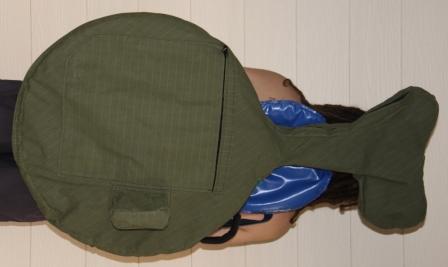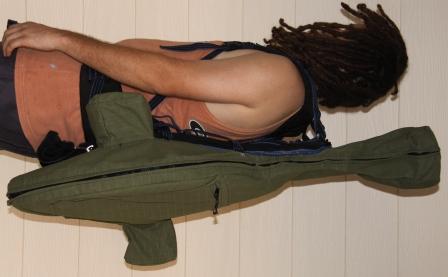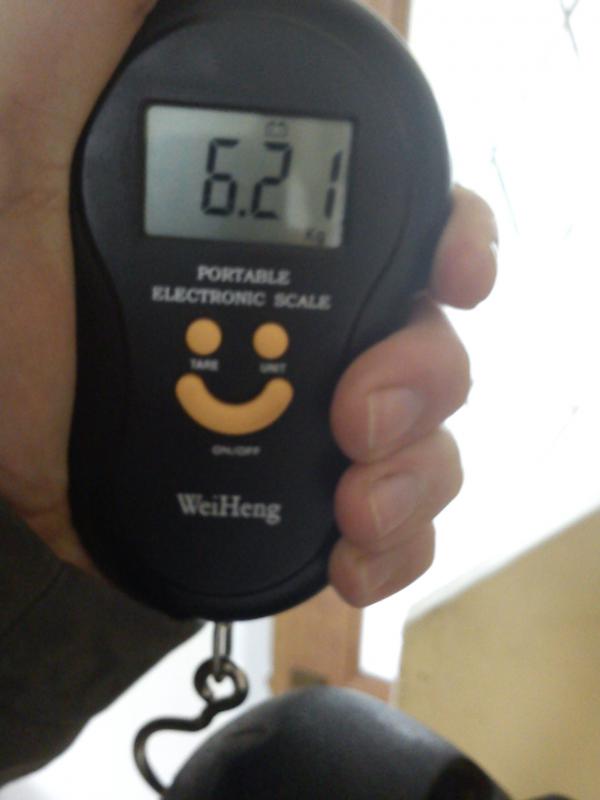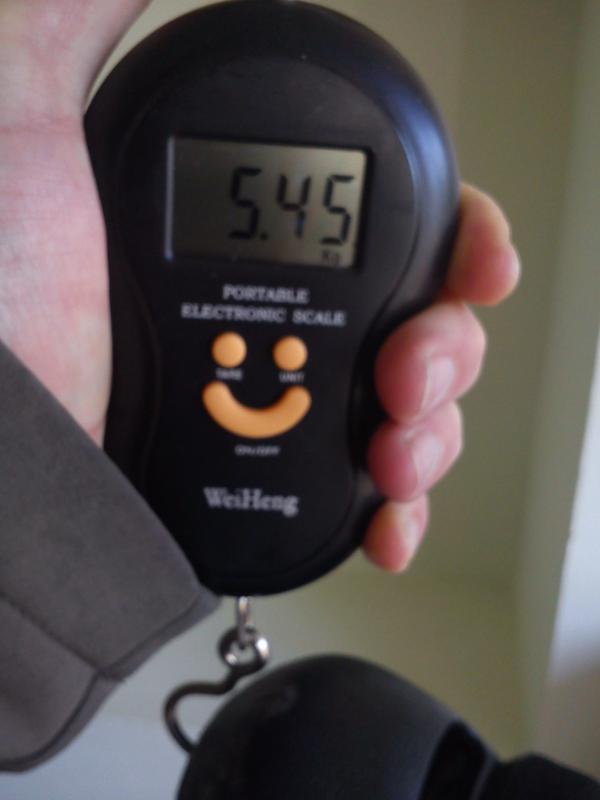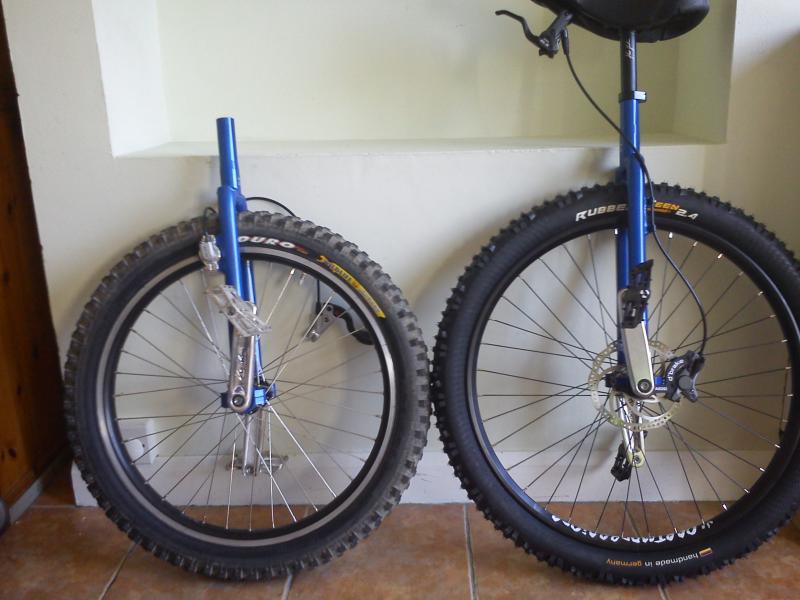Hi all
Nurse Ben I take no offence at all your comments are made as a helpful and well respected of this community and am grateful for your advice.
Whilst I am a Uni noob I have been truing bike wheels for 20 years and before being a dba/programmer (whatever the hell I am) I was an engineer (mechanical and then electronic with a bit of acoustic thrown in). If I had a lathe and Milling machine I would have been riding my own Disc Hub from the start 
I had concerns on the narrowness of this hub 15.5mm on the disc side (ouch) but with 9-10 speed rear cassettes on MTBs this is not to much difference (and they have a wider non-drive side flange spacing so the spoke tension variance between the two sides will be even greater.
The build went fine, I toyed with thread lock and read as much as I could and the advice is so diverse and everyone having their way. In the end I very lightly lubed the inner eyelet face with some light chain oil and the spoke ends were dabbed in a small amount of anti seize.
Tension is notably higher on the disc side as expected and feels very even, the non disc side is tight but slightly looser than the disc side. The Vertical and Lateral run out is less than half a millimetre which is less than the rim join bulge so with nice even spoke tension I called it a night there.
As I went along I gave the trailing spokes a slight bend at the flange with my thumb to straighten them a little and about 5 times through the build I went all around the wheel grasped and squeezed two pairs of spokes on opposing sides to help bend the paired lead/trailing spokes over each other, than re trued etc.
I normally have DT Rev spokes on my wheels but with the extra loads on a Uni wheel I went with the DT comps ( I did consider using revs on the non disc side to help balance spoke tension which is sometimes recommended). I also believed that DB spokes were generally better than straight gauge due to the elastic properties of a DB spoke allowing it to stretch and return back to shape distributing the load more evenly across adjacent spokes?
I was aware of spoke wind up and when the wheel started getting some tension I held the spoke as I adjusted it to feel the windup and made sure I was over shooting and backing off enough to get it out.
The Rim is perfectly centred / dished correctly and is truer than my Nimbus 24" rim (man that has got a pants pinned rim join).
I rode in to work today and I didn’t get a single ping or creak from the wheel presumably to the length I went to try and settle and stress relieve the spokes.
I will obviously keep a check on the wheel and I have a friendly wheel builder who I may well get to critique my build for learning purposes but overall I am very happy and found it an enjoyable experience and look forward to building some more wheels (I may even buy a stand, and tension gauge).
I hope that although a noob you can see my research and approach was far from noobish 
Anyway back to the build
Wheel done I slung the Rubber Queen on and she is a fatty, she has massive volume for her width (which isn’t too shabby) and on the Dartmore rim I just had to tickle her to get her on the rim.
Stole my seat and post of my KH24 for now and slapped that on.
The SLX brake is awesome, like my old XT brakes it has a servo wave cam (As was introduced on V-brakes in the day) so the pads move fast and a big distance then the cam rolls down a ramp to decrease movement and increase leverage. On a disc brake this means oodles of pad clearance so a doddle to set up and no brake rub, even with a tweaked rotor you would be fine! The only issue is the lever clamp bolt is in a poor place so in gets squashed between the seat base and the KH lever mount, not by too much so the handle is still nice and tight.
It is irritating that in the name of ergonomics (not cost saving honest) calliper manufactures have gone with fixed angled hose inputs as the back angle of the D-Brake to allow easier wheel removal means you can’t angle the hose on most callipers now
I chopped the cable and fitted the insert with the handy hose clamp provided no bleeding required as a capillary action held all the fluid in the hose. I then used some car P-clips on the magura mounts to hold the hose in place which looks nice and neat.
The Qu-Ax cranks are nice and light and feel more than strong enough for XC riding, torqued them up nice and tight with some thread lock (I HATE loose cranks). I then popped on the Electron pedals which are stupidly light and the low profile design is fantastic, a bargain for £32!
My ride to work was awesome, I mounted first time and it felt a little odd, definitely faster with the bigger wheel and 145mm cranks, but the two main things that got me was how fast the light wheel spun up this thing is going to climb so well! The other big thing was how well mannered she was, the KH24 in retrospect feels so twitchy where the kh26 feels planted, she turns just as well but resists wobbling so much more, not to mention she smoothes out the bumps rolling over things that would make me have to correct on the KH24 when it would grab my wheel.
I was going to still take my KH24 on the first MUni group ride of a new group I am now a member of as I was worried the KH26 would knock my proficiency back a step or two but I have no such worries now 
I will weigh and measure my forward development of my KH24 and KH26 tonight and post the figures up as I think that will be pretty interesting.
Now for some pictures, sorry they are not great, the light last night wasn’t great (being night time and all) and this morning it was still rising when I left. I will get some better ones later.
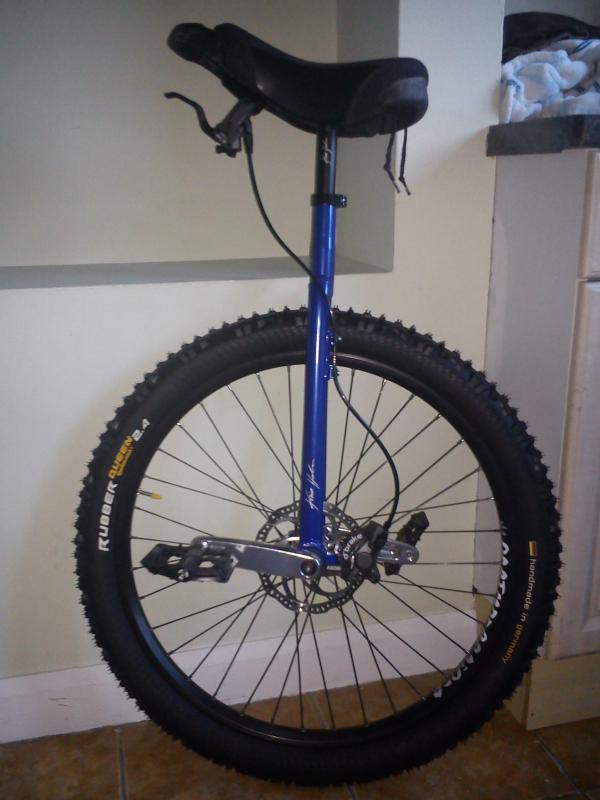
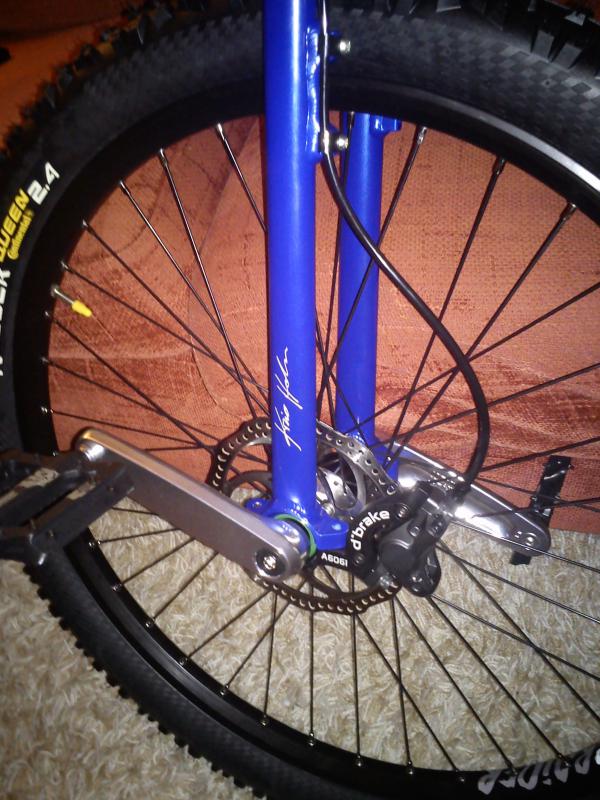


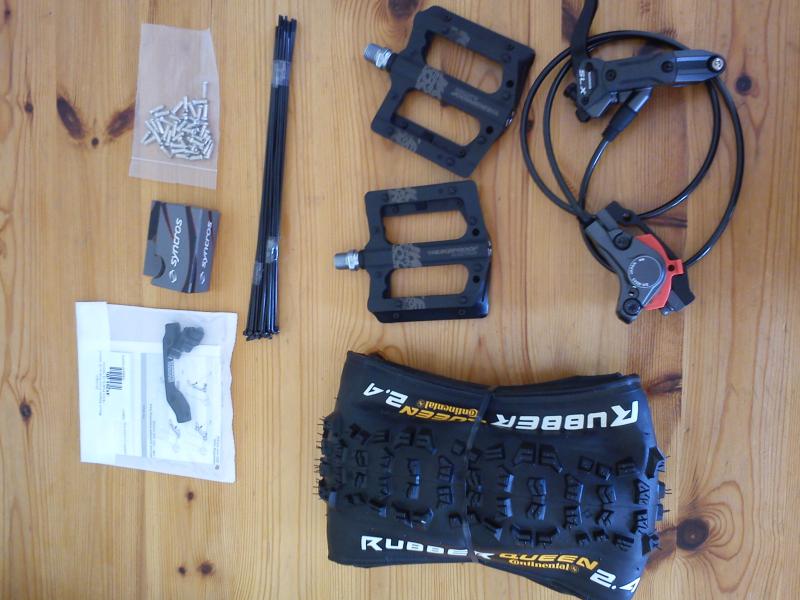
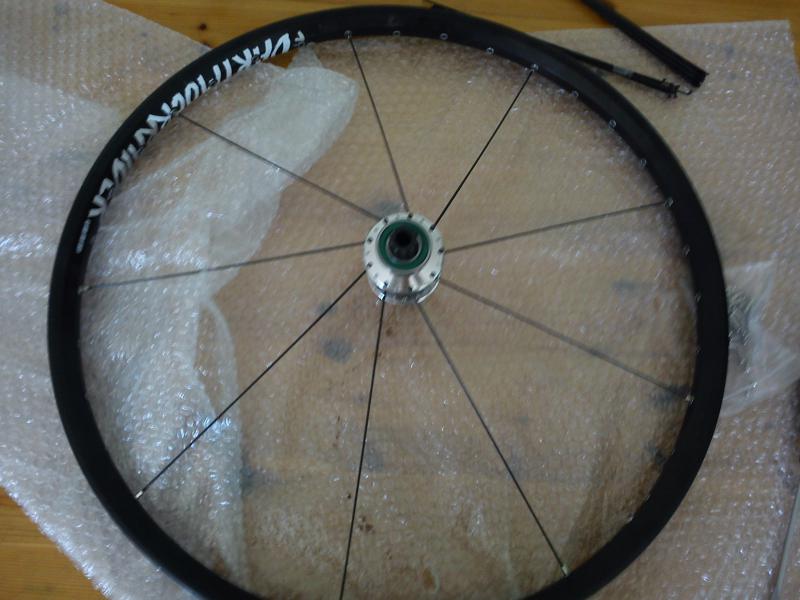
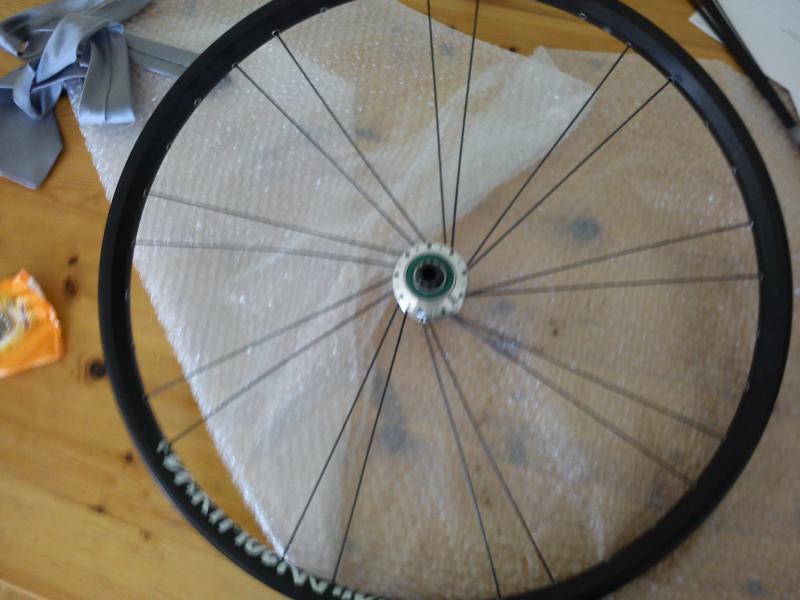
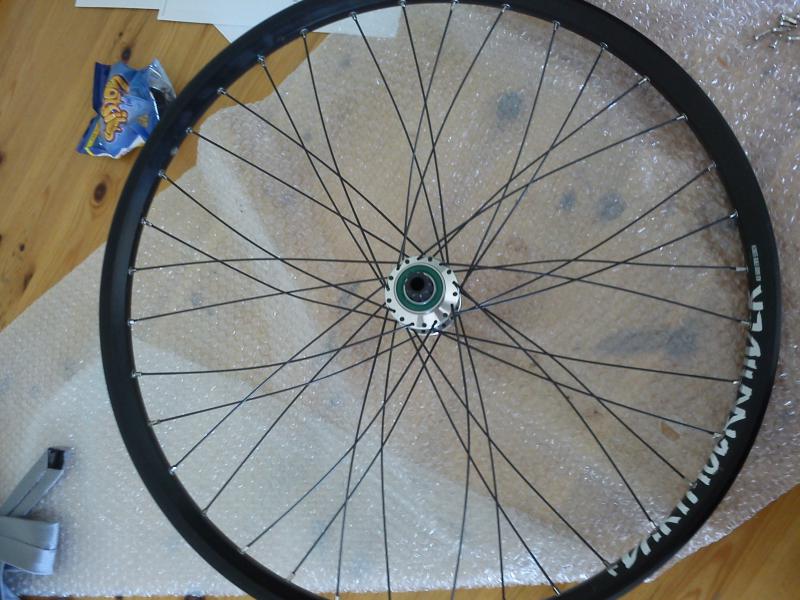
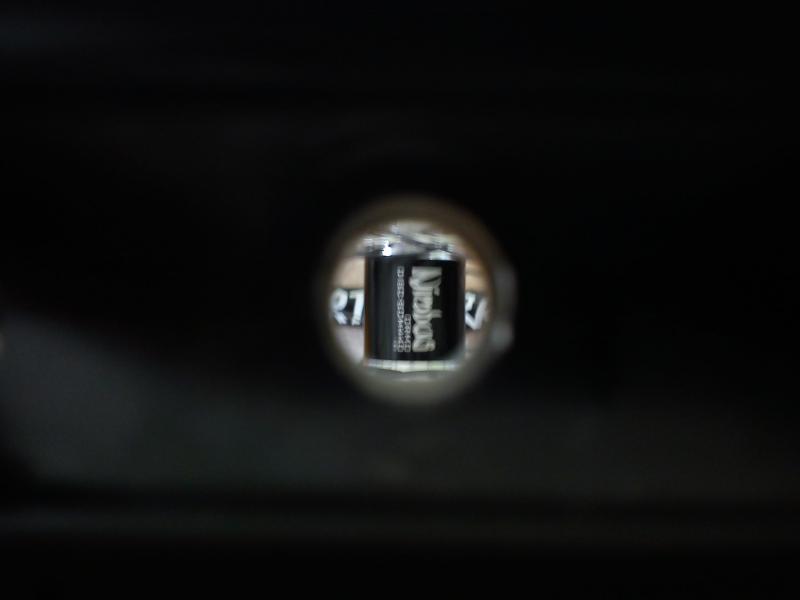
 )
)